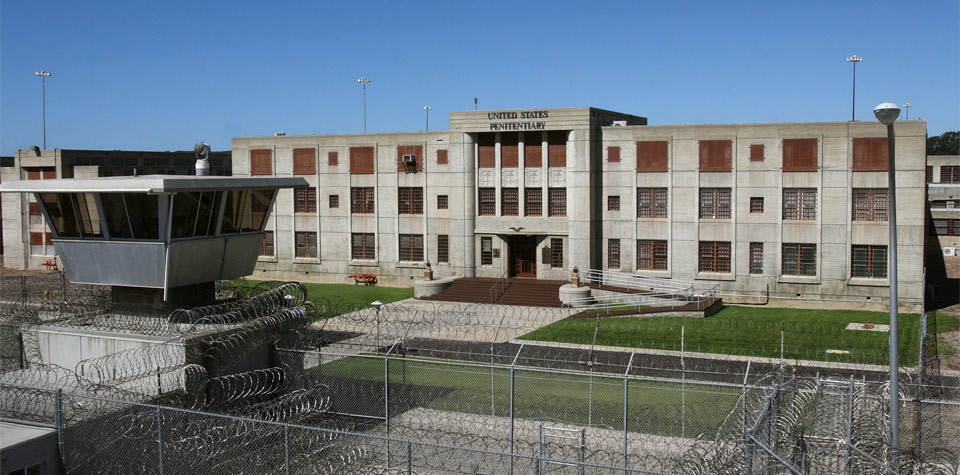Lompoc Prison Medical Inspection Reveals ‘Serious Deficiencies’ in COVID Response
Doctor Finds Evidence of Poor Health Care for Inmates and Staff Refusing to Wear Masks

A court-ordered medical inspection of the Lompoc prison complex, the site of a massive COVID-19 outbreak this spring that killed four inmates and infected more than 1,000 others, found “serious deficiencies” in the facility’s response to the health crisis.
“The COVID-19 outbreak at [Lompoc] has been one of the prison system’s most expansive, in terms of the percentage of detained people who were infected as well as those who died,” states Dr. Homer Venters in his September 25 report, which outlines a pattern of slow and inadequate health care for inmates; routine failures by staff to wear masks and provide detainees with cleaning supplies; significant screening deficiencies; and retaliation against inmates who filed grievances over their treatment.
“Overall, the COVID-19 response at Lompoc is characterized by some evidence-based strategies being superimposed on a grossly inadequate system of health care,” said Venters, an epidemiologist appointed by a U.S. District Court judge to provide expert testimony in a class-action lawsuit filed in May by the American Civil Liberties Union (ACLU). “As a result, the policies and procedures developed to find and respond to COVID-19 cases, slow the spread of the virus, and protect high-risk patients have been incompletely implemented.”
Get the top stories in your inbox by signing up for our daily newsletter, Indy Today.
Venters’s report was released shortly after the Lompoc Prison Task Force, a coalition of Santa Barbara County elected officials and community advocates, issued its own letter to the court demanding greater transparency from the prison and better access between inmates and their ACLU attorneys. The letter was signed by Lompoc Mayor Janelle Osborne and County Supervisor Joan Hartmann, among others.
Many of the facility’s problems “flow directly from chronic, unaddressed understaffing,” notes Venters, who spent September 1 and 2 touring the complex and speaking with 52 inmates as well as 25 staff. “This problem has been previously identified but I am very concerned by facility leadership’s inability to discuss or quantify how these shortages relate to the COVID-19 response.” While the worst of the outbreak has passed, Venters explains, many of the inmates he spoke with are still experiencing lingering COVID-19 symptoms, including shortness of breath, pain with breathing, daily headaches, ringing in the ears, and weakness.
Venters highlighted what appeared to be a common tactic by security staff to suppress damning information about the prison from reaching him and the court. “Several people reported intimidation from correctional officers before my inspection, including outright threats to not speak with me as well as threats of solitary confinement,” he wrote. “In areas with paper towels” ― inmates had consistently complained to Venters that they were forced to use their own cloth towels to clean both their bodies and their cells ― “detained people stated that the paper towels and soap were only made available in the days before my inspection.”
Venters was particularly concerned that the prison had used small, single-person isolation cells normally reserved for punitive purposes as quarantine units for infected inmates. This often deterred potentially sick detainees from disclosing their symptoms to staff. “The housing of people for 22-24 hours per day in cells, without access to basic privileges including phone and out-of-cell time, is not appropriate and runs counter to CDC guidelines on making COVID-19 responses in detention,” he said.
Venters did, however, find a few key strengths of the prison during the unfolding health emergency. While inmate screening procedures were haphazard and inadequate, staff screenings were performed consistently well, he said. Venters also lauded the complex for constructing a 20-bed hospital unit in an old factory on the property to care for detainees. “This unit is superior to any other effort I have seen in my 12 facility COVID-19 inspections and clearly provided a higher level of care to the relatively small number of patients who were treated there,” he said.
The creation of the hospital unit, along with a 50-bed mobile care tent at the property, test kits, personal protective equipment, and other expenses, were part of the facility’s $9 million response to the outbreak. The funds came from the $100 million provided to the Bureau from the Coronavirus, Aid, Relief and Economic Security Act, which was signed into law in March. The hospital unit lies fallow now, Venters noted, “reportedly because of a lack of dedicated staff and also because of an unclear clinical need.”
At the Santa Barbara Independent, our staff is working around the clock to cover every aspect of this crisis — sorting truth from rumor. Our reporters and editors are asking the tough questions of our public health officials and spreading the word about how we can all help one another. The community needs us — now more than ever — and we need you in order to keep doing the important work we do. Support the Independent by making a direct contribution or with a subscription to Indy+.


